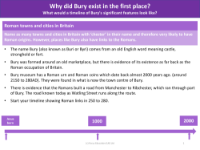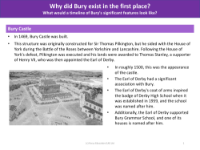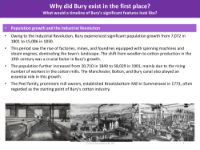The coming of the Railway - History of Bury - Year 3

History Resource Description
The historical impact of the railway on the town of Bury is a significant chapter in its development, particularly relevant for Year 3 history students. With the advent of the railway, Bury established connections to Manchester and beyond, which catalysed a period of swift expansion for the town. This growth was so extensive that it absorbed neighbouring smaller towns like Elton, Walmersley, and Heap. By the 1890s, the landscape of Bury had changed dramatically with the emergence of dense rows of terraced houses, especially in areas such as Freetown, Fishpool, and Pimhole, which were previously undeveloped. These new residential zones were closely linked to the industrial lifeblood of the town - its factories and mills.
However, the rapid urbanisation brought with it significant challenges. The hastily constructed terraced housing was basic in nature, often lacking essential amenities such as proper sewage systems and well-maintained streets. Overcrowding became a stark issue, with survey results indicating that it was common for five or six individuals to share a single bed, and many homes were in a state of neglect. The Industrial Revolution's toll on public health was acutely felt in Bury, with the average age at death in one street recorded as being under 14 years old. These dire conditions prompted public health reforms, with Bury at the forefront of towns requiring such vital improvements.





